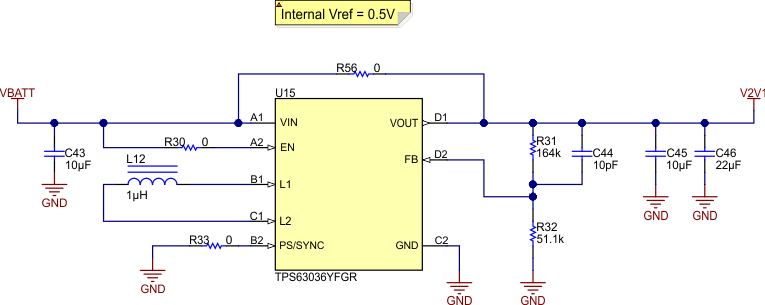TIDUDO6B May 2019 – October 2020
- Description
- Resources
- Features
- Applications
- 5
- 1System Description
-
2System Overview
- 2.1 Block Diagram
- 2.2 Highlighted Products
- 2.3
System Design Theory and Design Considerations
- 2.3.1 AFE4900 and Power Supply
- 2.3.2 CC2640R2F Microcontroller
- 2.3.3 PPG Measurement
- 2.3.4 ECG Measurement
- 2.3.5 Selecting TX Supply (TX_SUP) Value for Driving LEDs
- 2.3.6 Generating TX Supply for Driving LEDs
- 2.3.7 Generating RX Supply for AFE4900
- 2.3.8 Generating I/O Supply
- 2.3.9 Battery Input and Reservoir Capacitors
- 2.3.10 Battery Life Calculations
- 2.3.11 External Memory
- 2.3.12 LED Indications
- 2.3.13 Connections Between Sensor Board and ECG Board
-
3Hardware, Software, Testing Requirements, and Test Results
- 3.1 Required Hardware and Software
- 3.2 Testing and Results
-
4Design Files
- 4.1 Schematics
- 4.2 Bill of Materials
- 4.3
PCB Layout Recommendations
- 4.3.1 Layout for Main Board
- 4.3.2 Connection From PDs to AFE
- 4.3.3 Connections From LEDs to AFE
- 4.3.4 Connections From ECG PADs to AFE
- 4.3.5 Connections Between BT and AFE
- 4.3.6 Connections Between BT Antenna and Chip
- 4.3.7 Boost Converter
- 4.3.8 Buck-Boost Converter
- 4.3.9 Layouts for PPG Sensor Boards
- 4.3.10 Layout for ECG Sensor Board
- 4.3.11 Layout Prints
- 4.4 Altium Project
- 4.5 Gerber Files
- 4.6 Assembly Drawings
- 5Software Files
- 6Related Documentation
- 7About the Authors
- Revision History
2.3.7.4 Inductor Selection
For high efficiency, the inductor must have a low DC resistance to minimize conduction losses. Especially at high-switching frequencies, the core material has a greater impact on efficiency. When using small chip inductors, efficiency is reduced mainly due to higher inductor core losses. This must be considered when selecting the appropriate inductor. The inductor value determines the inductor ripple current. The larger the inductor value, the smaller the inductor ripple current and the lower the conduction loss of the converter. Conversely, larger inductor values cause a slower load-transient response. The peak current for the inductor in steady-state operation can be calculated to avoid saturation of the inductor with the chosen inductance value. The equation which defines the switch current in boost mode is reported, because it provides the highest value of current and represents the critical current value for selecting the right inductor.

where
- D = Duty cycle in boost mode
- F = converter switching frequency (typical 2 MHz)
- L = Selected inductor value
- Η = Estimated converter efficiency
- ISW_MAX = Maximum average input current
Figure 2-14 shows the schematic for the buck-boost converter, TPS63036.
 Figure 2-14 TPS63036 Buck-Boost Converter (VOUT = 2.1 V)
Figure 2-14 TPS63036 Buck-Boost Converter (VOUT = 2.1 V)